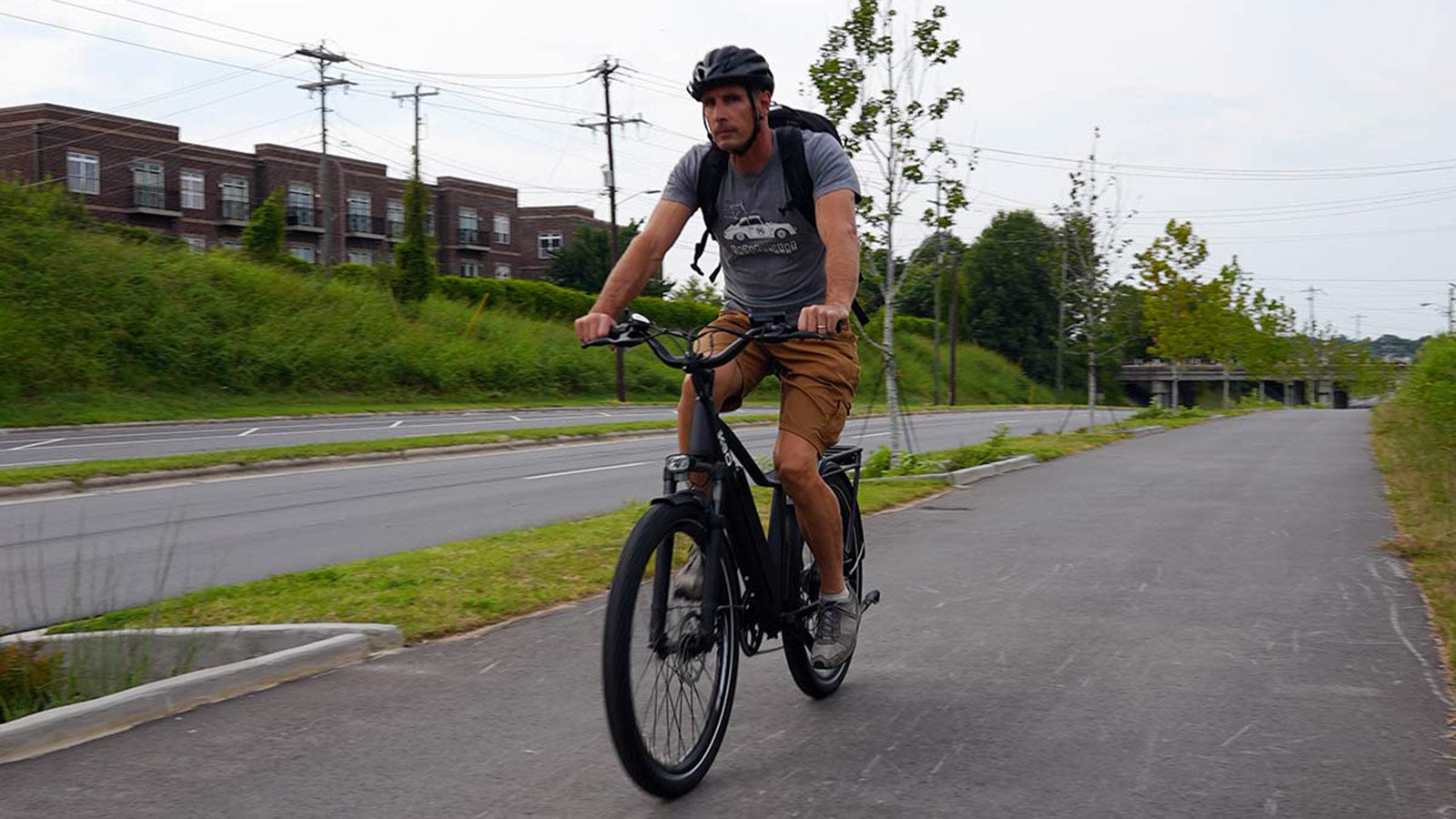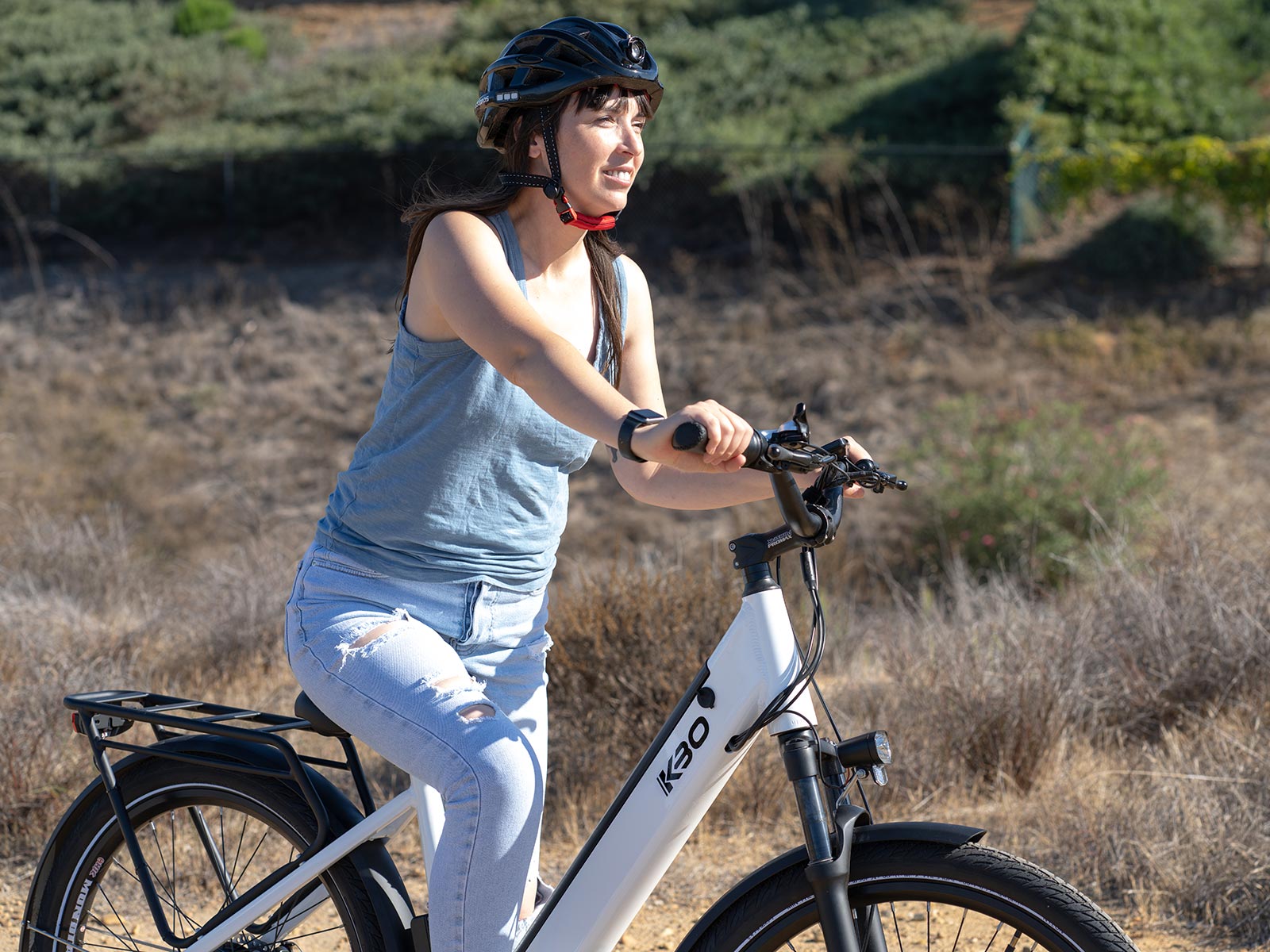Related Product


Share Article
How To Learn To Ride An Electric Bike As An Adult | KBO Bike
Growing up, many of us never had the opportunity to participate in some exciting activities we would have liked to do. It could be due to a lack of funds or strict parents. Adulthood gives us the freedom to make whatever decisions we desire for ourselves. You have the opportunity of exploring your cycling interest. It is never too late to make up for all those years of fun.
There is a common notion that if you did not learn to ride a bicycle as a child, the person has missed out. You do not need to be a child to learn how to ride a bike. After all, learning to ride a bike as an adult is no more difficult than learning as young folk, provided you follow the standard step-by-step method and disregard adult anxieties and concerns. All you need is a bicycle and a safe, open location where you may practice, such as an empty parking lot or park. Using a hilly route to learn is not the best option.

An electric bike, often known as an E-bike, is a bicycle including an electric motor that assists you in pedaling. A rechargeable battery installed on the bike will provide power to the motor. To be considered an E-bike, the engine must aid you rather than drive you forward. As a result, you will have to peddle to obtain that help. The amount of power delivered by the motor is dependent on how hard you pedal and the level of assistance you choose. With this option available to a learner, you can comfortably find your balance by cruising from a halt before you begin to learn how to pedal alongside to propel yourself.
What is the difference between riding an e-bike and riding a regular bike?
Regular mechanical bicycles feature the same wheels, handlebars, and body geometry as the electric ones too. The mechanical parts, including the pedals and brakes, all work in the same way. The inclusion of the electrical driving system is the sole variation in appearance and operation. You can learn more the differences between electric bike and regular bike.
How does an electric bike work?
The electric motor is usually located in the middle of the bike or on the front or back hub. An axle-mounted motor works through the e-bike chain and gears rather than directly pushing the wheel around.
When you pedal, a torque sensor measures your effort and matches it to the motor output power. The idea is that the motor will not take over fully; instead, you will receive constant power delivery.
Power is supplied by the battery, which is mounted on the outside or hidden within the frame. Many batteries may be removed and charged, while others must be recharged while fitted. If that is the case, you’ll need a location where you can store the bike near a power outlet.
The motor will be regulated by a controller, which is generally located on the handlebar or incorporated into the frame and allows you to choose how much help you want.
Advantages of learning how to ride an E-bike?
1. Electric bikes are not significantly more expensive than non-electric bikes.
2. They are efficient for uphill riding.
3. They are helpful for those with knee problems or asthma.
4. They are more climate-friendly than other modes of transportation.
5. They cover greater distances in less time than traditional bikes.
6. They are more fun than you’d expect.
7. They offer a fun way to burn some calories.
8. They are a great conversation starter.
9. No special requirements.
Choose the right bike, and set it up.
To choose the right e-bike that best suits your riding persona, you can read through our E-bike style guide. Choose the bike that best suits you, and customize it to your body structure. Set the saddle in such a way that your leg touches the ground when you are sitting on it. You should also adjust the handlebar in such a way that your hands can easily reach them without leaning in too much. You can choose a step-through bike which is great for those who would say they are short. Read our e-bike style guide to know how to choose your bike.
Understanding the E-Bike Classes and Types
Understanding the way these e-bikes work will help you choose the best one for your practice and purchase.
Electric bikes are divided into three categories or types:
1) Pedal Assist E-Bike
This electric bicycle requires you to pedal to use the motor. It’s basically like a regular bicycle, except that it has a motor that detects when you’re pedaling and kicks in to assist you. It seems like you’re always riding the finest tailwind of your life. The throttle on this class/type of E-bike may or may not be present. (Pedal Assist, the throttle may or may not be included, maximum speed 20 mph, no driver’s license required, and no age restriction.)
2) TYPE 2 E-Bike
Throttle Only, which is an e-bike with a throttle-controlled motor. You do not have to pedal to profit from the motor on these electrics. Simply crank the throttle when you need more power, and you’ll be on your way. You’ll be able to increase traction by accelerating in the middle of a bend. Of course, the more you pedal, the sooner the battery runs out of power. (Throttle only, maximum speed 20 mph, no driver’s license required, no age restriction.)
3) TYPE 3 E-Bike with Pedal Assist and a top speed of 28 mph
With a top speed of 28 mph, this Class/Type is the quickest “legal” E-bike. It is still classified as a “bicycle” and does not require a driver’s license, license plate, or other identification. It’s technically a bicycle, and it’s a lot of fun! Helmets are required by law. This category is best suited to someone who commutes by bicycle. (Pedal Assist, the throttle may or may not be included, maximum speed 28 mph, no driver’s license necessary, must be 17 or older, helmet required.)

How do you ride an electric bike?
Riding an electric bike is almost the same as riding a regular bike. You turn on the motor, use the controller to pick the degree of help you desire, and then pedal. The motor will make initial acceleration much simpler and then assist you in maintaining pace, which is very useful while climbing a hill.
Let us go through a few extra tips that will help you get it right.
1. Use Training Wheels
Training wheels are two supporting wheels you can usually find on the sides of a kid’s bike. They come in different sizes and are perfect for people just starting.
2. Take your time
Because of the speeds involved, riding an electric bike is a unique experience. Starting in a flat, open area is an excellent idea. Because electric bikes are heavier, switching gears when not riding becomes more difficult. Pick up the back of the bike and turn the pedals a couple of times while changing to a low gear if you can. Begin with no support at all. Get the bike rolling and then turn on the assistance when you feel stable and comfortable. As the aid comes in, this procedure will help you feel in charge.
3. Learn how to Balance
Glide your way through as you understand your bike stability, and learn to balance. That is one of the edges an e-bike gives you. While you try to get around to pedal, the throttle from rest option can help you focus on maintaining your balance. Try not to look at your feet when riding, as this tends to throw you off balance.
4. Learn how to use your brakes
Practice using the hand brakes to know how much pressure is required to slow or stop the vehicle. Learn to low down by walking beside your bike and partially squeezing the brakes. Squeeze both the front and rear brakes at the same time. Then, attempt to come to a smooth, controlled halt that isn’t jerky or overly abrupt. Stopping every 15 to 20 feet should be practiced until you can do it well. You can also learn more about how to use your brakes by reading our blog post on riding an e-bike downhill.
5. Understand how to change your gears
The shifter on the handlebars is slid or clicked to change gears. This moves the chain to a new ring size (or changes the amount of electric power output). Downshifting refers to shifting into a lower gear, whilst upshifting refers to shifting into a higher gear. You may also say downshift and upshift. You can read more about how to shift your gears effectively on our blog.
6. Take appropriate safety measures
As much as we hope for a mishap to happen, it does not hurt to be a little more cautious by wearing a helmet and some knee pads. As a learner, you should learn safety habits alongside.
Finally, patience is the virtue you want to hold on to; while you are learning to ride a bike as an adult, try not to go at high speed until you have learned how to use your brake and mastered your balancing skills. What are you then waiting for? Go live the pedal life you have always imagined.How does an electric bike work?
The electric motor is usually located in the middle of the bike or on the front or back hub.
Related Product

























































